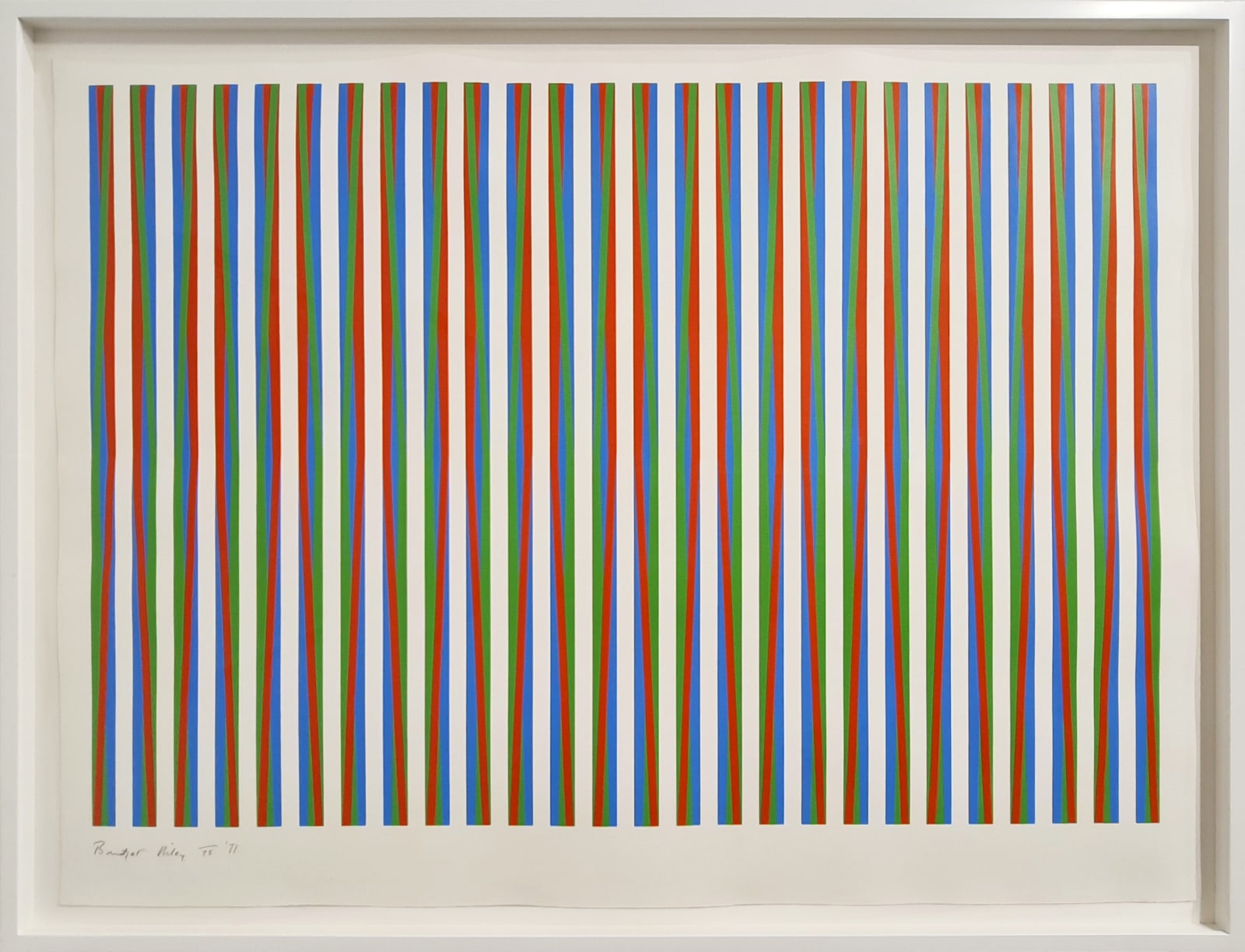Bridget Riley U. K., b. 1931
Firebird, 1971
Screenprint in three colours on wove paper, framed
Signed by the artist in pencil, on recto
Signed by the artist in pencil, on recto
76.5 × 101.7 cm
© Bridget Riley
Further images
Firebird (1971) marks a pivotal moment in Bridget Riley's artistic journey, representing one of her first significant explorations into colour after her earlier black-and-white works. This screenprint features vertical bands...
Firebird (1971) marks a pivotal moment in Bridget Riley's artistic journey, representing one of her first significant explorations into colour after her earlier black-and-white works. This screenprint features vertical bands of red, green, and blue separated by white spaces, creating a dynamic visual experience.
The artwork consists of intertwining vertical stripes that generate an illusion of twisting and movement. Riley carefully composed these elements to guide the viewer's eye through the piece, resulting in a mesmerising optical effect.
The artist suggested that these horizontally striped works be read from left to right to appreciate the variations between warmer and cooler hues fully.
Firebird emerged during a crucial period in Riley's career as she transitioned from her renowned black-and-white compositions to colour works. This shift began in 1967 and represents a careful exploration of the possibilities of colour.
The work illustrates Riley's philosophy that "the basis of colour was its instability," as the interacting stripes create the impression of blending and bleeding into one another.
Riley's approach to colour in Firebird reflects her methodical artistic process. Instead of merely creating coloured forms, she aimed to generate a "colour-form," in which each hue responds to and interacts with its neighbours. This interaction produces a rainbow effect and creates additional perceived colour through optical mixing.
The artwork consists of intertwining vertical stripes that generate an illusion of twisting and movement. Riley carefully composed these elements to guide the viewer's eye through the piece, resulting in a mesmerising optical effect.
The artist suggested that these horizontally striped works be read from left to right to appreciate the variations between warmer and cooler hues fully.
Firebird emerged during a crucial period in Riley's career as she transitioned from her renowned black-and-white compositions to colour works. This shift began in 1967 and represents a careful exploration of the possibilities of colour.
The work illustrates Riley's philosophy that "the basis of colour was its instability," as the interacting stripes create the impression of blending and bleeding into one another.
Riley's approach to colour in Firebird reflects her methodical artistic process. Instead of merely creating coloured forms, she aimed to generate a "colour-form," in which each hue responds to and interacts with its neighbours. This interaction produces a rainbow effect and creates additional perceived colour through optical mixing.













